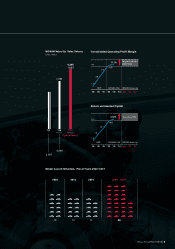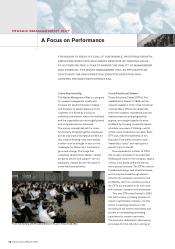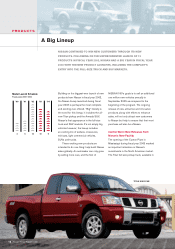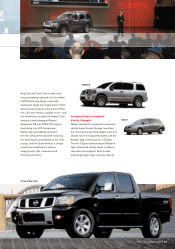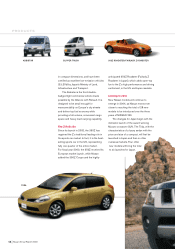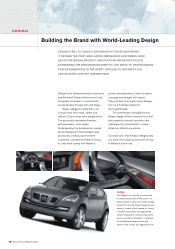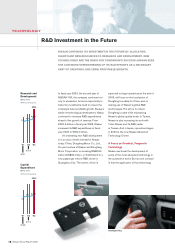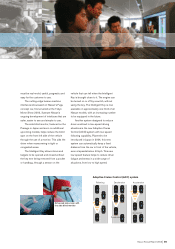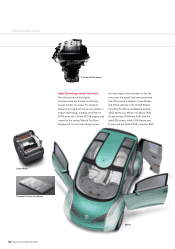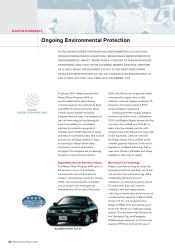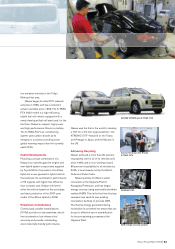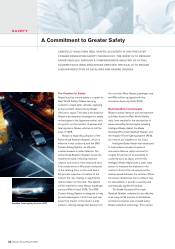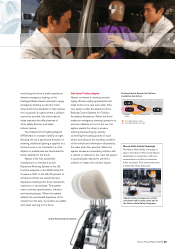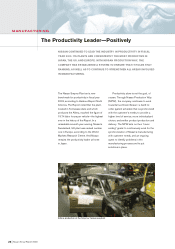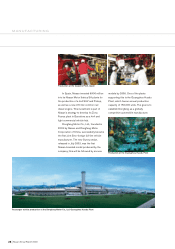Nissan 2004 Annual Report Download - page 21
Download and view the complete annual report
Please find page 21 of the 2004 Nissan annual report below. You can navigate through the pages in the report by either clicking on the pages listed below, or by using the keyword search tool below to find specific information within the annual report.
Nissan Annual Report 2003 19
must be real-world, useful, pragmatic and
easy for the customer to use.
The cutting-edge human-machine
interfaces showcased on Nissan’s Fuga
concept car, first unveiled at the Tokyo
Motor Show 2003, illustrate Nissan’s
ongoing development of interfaces that are
safer, easier to see and simpler to use.
The side blind monitor, featured on the
Presage in Japan and soon on additional
upcoming models, helps reduce the blind
spot on the front left side of the vehicle
through the use of a monitor. This aids the
driver when maneuvering in tight or
congested areas.
The Intelligent Key allows doors and
tailgate to be opened and closed without
the key ever being removed from a pocket
or handbag, through a sensor on the
vehicle that can tell when the Intelligent
Key is brought close to it. The engine can
be turned on or off by a switch, without
using the key. The Intelligent Key is now
available on approximately one-third of all
Nissan models, with an increasing number
to be equipped in the future.
Another system designed to reduce
driver workload in low-speed driving
situations is the new Adaptive Cruise
Control (ACC) system with low-speed
following capability. Planned to be
introduced in Japan in 2004, this new
system can automatically keep a fixed
distance from the car in front of the vehicle,
even at speeds below 40 kph. This new
low-speed feature helps to reduce driver
fatigue and stress in a wide range of
situations, from low to high speed.
Enhanced side vision with
the side blind monitor
Acceleration
Following Deceleration Acceleration
Deceleration
Adaptive Cruise Control (ACC) system


